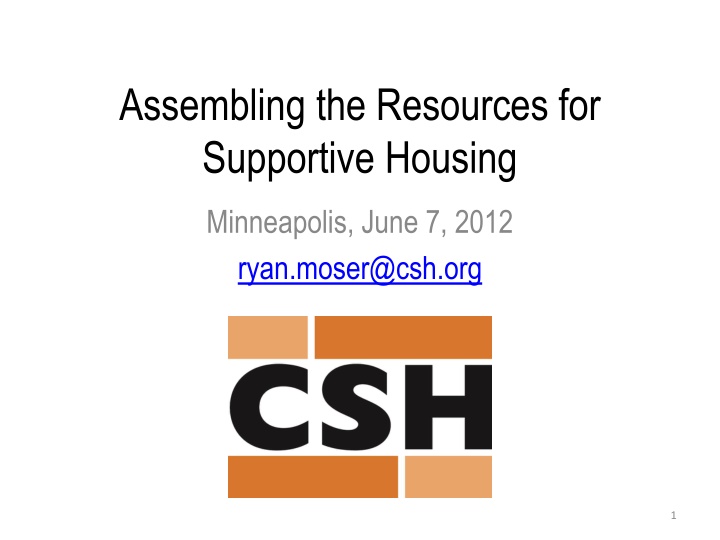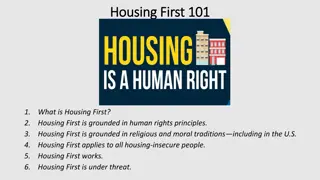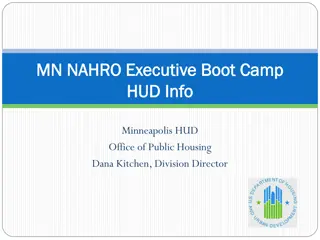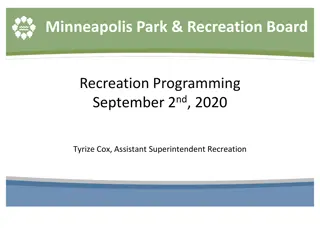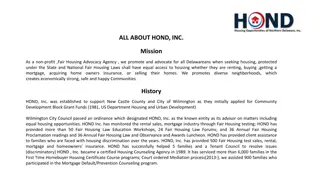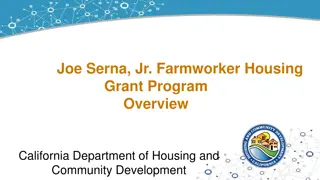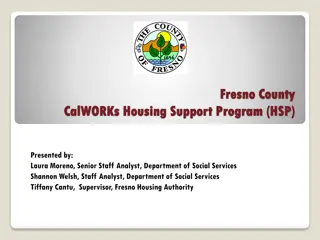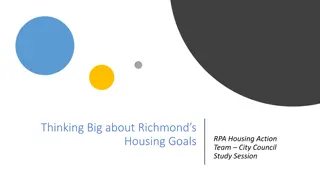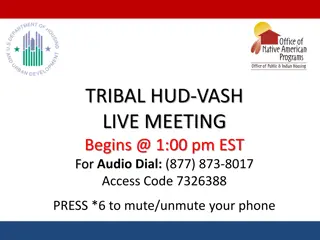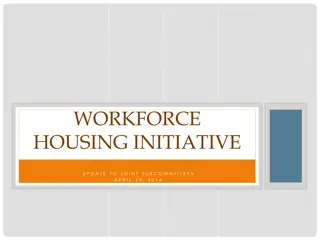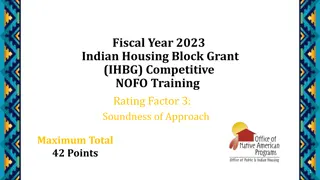Resources for Supportive Housing Development in Minneapolis
Supportive housing combines permanent, affordable housing with services to promote stability and productivity. The initiative in Minneapolis involves various models and projects like SERV Integrated Housing. Developing supportive housing involves a non-linear process with key stages like Concept, Feasibility, Dealmaking, Development, and Operations. Funding sources for such projects typically include federal programs, philanthropy, and local partnerships.
Download Presentation

Please find below an Image/Link to download the presentation.
The content on the website is provided AS IS for your information and personal use only. It may not be sold, licensed, or shared on other websites without obtaining consent from the author.If you encounter any issues during the download, it is possible that the publisher has removed the file from their server.
You are allowed to download the files provided on this website for personal or commercial use, subject to the condition that they are used lawfully. All files are the property of their respective owners.
The content on the website is provided AS IS for your information and personal use only. It may not be sold, licensed, or shared on other websites without obtaining consent from the author.
E N D
Presentation Transcript
Assembling the Resources for Supportive Housing Minneapolis, June 7, 2012 ryan.moser@csh.org 1
What Is Supportive Housing? A cost-effective combination of permanent, affordable housing with services that helps people live more stable, productive lives. 2
Models of Supportive Housing Single-Site, Single Purpose Single-Site, Integrated Clustered Scattered-Site Scattered-Site Set-Asides 3
SERV Integrated Housing Bergenline Ave (Hudson County, NJ) and Boulevard East (Bergen County, NJ) Each building has12 units that include 5 PSH units and 7 affordable units. Guttenberg (Hudson County, NJ) 14 unit property that offers 6 PSH units and 8 affordable units. PSH units serve people with serious mental illness. All units serve people at 50% and below AMI.
Vision Drives Resource Development Mission Mandate Community and Individual Needs Agency Priorities Budget Drivers Choice of Population, There is Never Enough Supportive Housing to Serve Everyone 5
Developing a Supportive Housing Initiative Can be confusing! Not necessarily linear No standard model Tasks are interdependent Multiple players 6
ONE: Concept Go? TWO: Feasibility No Go? Go? Go? THREE: Dealmaking No Go? Go? FOUR: Development FIVE: Operations 7
Targeted Tenancy Operating Development Budget Services Budget Operating Budget 8
A Typical Deal Capital HOME/CDBG Low Income Housing Tax Credits Federal Home Loan Bank Operating HUD McKinney Section 8 Services Medicaid Philanthropy/Foundations Local Sources Specialized Partnership Services Development Scattered-Site or Set-Aside C 9
The First Leg: Capital C 10
To Build or Not to Build, That is the Question. Pros Cons Long term project stability Take advantage of property assets; affordable housing market Building culture can be pro-social Exciting flagship Easier to offer onsite services Minimum 3 year timeframe Development Requires a High Capacity Housing Partner Not In My Back Yard Concentration 11C
Capital Builds the Box The costs of designing, purchasing, building or rehabilitating, and filling housing units with tenants. Soft Costs: Consultant Fees, Architectural Drawings, Marketing Units, Appraisals, Legal Fees, Permits, and Studies Hard Costs: Acquisition, Construction or Rehabilitation, and Offsite Improvements C 12
Capital Sources Capital funding is generally offered in the form of either: A grant A deferred loan (which operates as a grant for a specified period of time) A low-interest loan A Low-Income Housing Tax Credit Award providing investment equity 13
Castle Gardens, The Fortune Society Capital Sources NYS Housing Finance First Mortgage $3,600,000 NYS Housing Finance Second Mortgage $4,000,000 Federal Home Loan Bank Affordable Housing Program $1,500,000 NYS Office of Temporary and Disability Assistance, Homeless Housing Assistance Program $5,500,000 NYC Supportive Housing Loan Program (SHLP) $8,300,000 Mayor s Fund $250,000 NY City Council $2,000,000 Borough President Capital Funds $1,000,000 NYS Energy Research Development Authority $239,390 Enterprise Green Communities $50,000 Low Income Housing Tax Credits $16,060,594 Deferred Developer Fee $ 1,000,000 Total $43,499,984 14C
Sources & Uses Schedule of Sources & Uses Combines costs with the financing #3 Donations Tax Credit Equity Deferred Developer Fee #1 IHCDA Trust Fund #2 IHCDA HOME $1,200,000 Tax Credit Equity Total $ Amount $1,200,000 $8,000,000 $2,250,000 $250,000 $1,200,000 #4 AHP Acquisition Construction Soft Costs Reserves Developer s Fee Other Total Total # of development units Total Development Cost per Development Unit (excluding reserves) $750,000 $1,800,000 $5,450,000 $1,650,000 $250,000 $800,000 $600,000 $ 400,000 $0 $12,900,000 $750,000 $1,200,000 $1,800,000 $600,000 $8,150,000 $ 400,000 80 $161,250 C 15
Sources of Financing Federal Sources: Federal Home Loan Bank Affordable Housing Program (AHP) ($750,000) HUD 811 & 202 C 16
Sources of Financing State Sources: Low-Income Housing Tax Credits (LIHTC) Indiana Development Fund or New York State Housing Assistance Program HOME and Community Development Block Grant (CDBG) Funds C 17
Sources of Financing County or Municipal Sources: HOME/CDBG Local Housing Trust Funds Tax Reaction/Scavenger Sale/donation of publicly- owned land (for acquisition) Tax Increment Financing Districts (TIFs) Empowerment Zones Enterprise Zones C 18
Low-Income Housing Tax Credits Eligibility is based on tenant income using HUD median income data, adjusted for family size Rent restrictions below 60% of AMI Tax credits received over the first 10 years of operation, but compliance period is 15 Typically suited for projects of at least 20 units C 19
Key Concept: Housing Funding is Restricted to Housing 20
The Second Leg: Operating 21
Operating Pays the Bills The costs of operating and maintaining the housing, including all costs of maintaining the project once it is ready for occupancy: Utilities Maintenance Services Insurance Security Debt Service or other Loan Payments Operating and Replacement Reserves (rent) 22
Relationship with the Development Budget DEVELOPMENT BUDGET OPERATING BUDGET Schedule of Sources and Uses of Funds Schedule of Income and Expenses Budget for capital funds used in the acquisition and improvement of the real estate. Annual budget for the operation of the real estate once development is complete. USES Hard Costs Acquisition Construction Contingency Soft Costs Professional fees Financing fees Start-up costs Developer fee Contingency Reserves Capital Operating TOTAL USES INCOME Gross Residential Rent Gross Commerical Rent (if any) Other income Vacancy Allowance EFFECTIVE GROSS INCOME + + + + + + + + + + + + + + + + + + EXPENSES Real estate taxes Insurance Utilities Maintenance and repairs Building payroll Management, admin. & marketing + + TOTAL EXPENSES + + + + + + + + + + + + = = SOURCES Equity Owner's Investor's Loan Grant TOTAL SOURCES EFFECTIVE GROSS INCOME TOTAL EXPENSES NET OPERATING INCOME Debt Service Cash Flow + + + + + + + + = = = O 23
Who Pays for Operating Support Sources that pay for costs of operating and/or maintaining the housing or physical component of supportive housing Who comprises the primary sources? Federal - HUD State County/Municipal Again, depends on your TARGET POPULATION O 24
Sources Overview Name Source Description Shelter Plus Care Supportive Housing Program Project Based Section 8 Section 811 HUD McKinney HUD McKinney 5 or 10 yr project-based subsidies homeless, disabled Funds leasing or operating costs homeless, disabled HUD and PHA HUD Administered by state or local housing authority Funds independent living facilities could be used for sup hsg Funds leasing and supportive services for homeless veterans HUD VASH HUD O 25
HUD McKinney Shelter Plus Care Rental assistance only eligible activity under SPC Funds provide the operating costs excluding services Target Population: Homeless and Disabled as defined by HUD Applicant must provide supportive services in an amount at least equal to the rental assistance provided during the term of the grant O 26
HUD Shelter Plus Care New construction: 5-year initial grant Rehabilitation: 10-year initial grant Can be sponsor-based or project-based subsidies Must apply through the local Continuum of Care Grants are large because must be for 5 or 10 years is there room in the Continuum? Example: 15 unit, 1bd, SPC for 5 years = around $1 million dollars O 27
HUD Supportive Housing Program Operations HUD Regulation: Pay up to 75% of annual costs Using other cash resources, make up difference between the total costs and the SHP grant Leasing Can pay for up to 100% of annual leasing costs With leasing, you cannot be the owner O 28
SHP Considerations SHP budgets do not allow for annual increases, even if your costs rise over time Continuums may have additional budget requirements Initial grant is typically for 2-3 years. Grants are renewed competitively on annual basis after initial award Grant is a direct grant with HUD Online: www.hud.gov/offices/cpd/homeless/library/shp/index.cfm O 29
Continuum of Care Homeless Bonus Project Bonus allocated to Continuums on annual basis Must fund ONE permanent supportive housing project that serves homeless, disabled Equal 15% of Continuum s pro-rata allocation In past, project had to be 80% housing and 20% services O 30
Bonus Project Considerations Good money if your project is located in Continuum with a decent size bonus Can fund leasing or operations Some Continuums are not able to use their bonus dollars due to lack of matching funds O 31
Key Concept: Get to know your Continuum of Care. 32
Tenant-Based Section 8 The typical scattered-site rental subsidy only program Can be challenging for tenants with special needs to navigate Specialized waiting lists can be set up by PHAs O 33
Project-Based Section 8 Project-Based voucher remains attached to the unit. Lesser known voucher component, and is optional for the PHA up to 20%. PHA attaches rent subsidy to a unit of rental housing through a contract with the owner that can last from 1 year to 15 years. O 34
Sponsor-Based Section 8 Newer process, similar to Shelter Plus Care administration where vouchers go to a sponsor agency Can be used to increase access for people in need of supportive services Available in Moving To Work sites Signals from HUD that they will review waiver requests for PSH related sponsor-basing O 35
Project-Based Section 8 Considerations PHA may have restrictions that exclude the population project intended to serve May require some education with PHA Section 8 certificates may be oversubscribed More info: www.tacinc.org/Docs/HH/OpeningDoors/ODIssue28 .pdf O 36
Public Housing Units Also administered by the PHA, although there are sometimes different applications Barriers can be harder to negotiate Efficiencies sometimes have higher vacancy rates O 37
Key Concept: Get to know your PHA/Vouchering Agency. 38
State/Local Rental Assistance Does not necessarily have the same targeting as Federal rental assistance. May not have the same barriers related to CJ populations. O 39
Section 811 The Section 811 program allows persons with disabilities to live as independently as possible in the community by increasing the supply of rental housing with the availability of supportive services. Current RFP has changed the format providing only operating assistance and requiring a partnership with the Medicaid administering agency and focus on high cost recipients. O 40
Section 811 Considerations Announced through competitive process in the HUD SuperNOFA (notice of funding availability) Timeframe: Spring O 41
HUD HOPWA Program National dollars Competitive SPNS dollars Local dollars formula dollars funneled through Dept of Public Health or Dept of Housing Amount of funding varies by location Funding specific for HIV/AIDS population Funding can include rental assistance, however, grants are typically not for more than 2-4 years at one time O 42
Funding Restrictions to Consider As we discussed with services, public financing program rules can differ significantly by source Need to consider: How does the source define homelessness? Are their qualifying disabilities? Are there barriers based on Criminal Justice or other restrictions? O 43
Key Concept: Operating stream may hide the need for capital funding. 44
The Third Leg: Services S 45
Develop a Service Plan You ll use it to inform your Service Budget TARGET POPULATION Service Needs Services Program Overview, Partners and Roles, Staffing, Outcomes Budget and Staffing Plan S 46
Common Approaches Contracts with funders for services to a set of eligible clients. Reimbursement agreement for certain services to eligible clients. Fixed fee for maintaining the health of individual clients. Grants that help cover service expenses. S 47
Budget Components (cont) Other expenses Consultant/contractual services Social/client services Transportation Staff training Supplies & materials for services General office supplies and support S 48
Federal Service Funding Significant portion of funding for services Some funding directly apply to feds Continuum of Care (through local process) Special request for proposals S 49
Federal Service Funding Majority of funding flow to local level Alphabet Soup - TANF, Medicaid, SAMHSA, Dept of Ed, VA, DOL, SSA Departments of Health & Human Services, Social Services, Education/Training, Employment, Workforce Investment Board, Schools S 50
